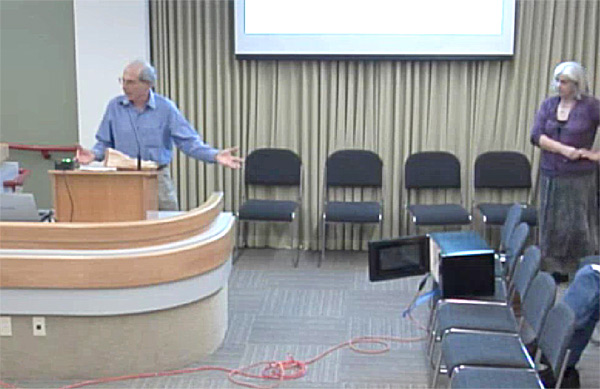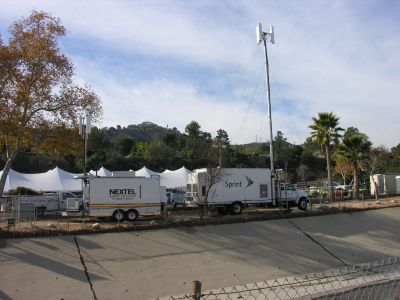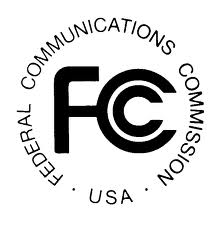SBA recently acquired Mobilitie’s tower portfolio of over 2,300 tower sites.
My friend and trusted colleague, attorney Mike Ritter of Tower Seekers has sent me a copy of an interesting (and potentially disastrous) letter being sent to tower site landlords by SBA, a tower company that acquired Mobilitie’s tower sites.
SBA (or one of its affiliates) is going after financing, and the SBA letter say, in part:
[SBA] or one of its affiliates is obtaining financing (the “Loan”) from a lender (together with its successors and assigns, the “Lender”), and will be pledging its interest in the Lease as collateral for the Loan and the Lender is also requesting confirmation of certain matters regarding the Lease.
In other words, SBA is going to take your wireless site lease and pledge it to secure a bank loan.
The next part of the letter asks the landlord to confirm certain facts about the existence and status of the cell site lease. This is a request for the landlord to execute what is called an ‘Estoppel Certificate.’ The landlord is being requested to legally certify that the facts stated in the letter are true and correct, and the lender can rely on those facts when making its loan to SBA. Commonly, there’s nothing wrong with such a request as long as the facts stated are entirely correct.
Once signed, however, the landlord is legally estopped (barred) from later claiming that some problem with the lease existed at or prior to the date he or she signed the Estoppel Certificate. If there’s some undiscovered problem, but the landlord signs the Estoppel Certificate, then he or she can be giving up very valuable lease enforcement rights. This is why it is critical for landlords to be exceptionally careful in ascertaining the accuracy of the facts before executing the Estoppal Certificate. In some cases, you (or more likely your attorney) will want or need change the language of the Estoppel Certificate before signing it, if it can be truthfully signed at all.
For example, in a current matter I’m handling for one of my cell tower site landlord clients, a tower company — not SBA — sent a written request to my client asking that he execute an Estoppel Certificate. The tower company even offered to pay $500 for the landlord’s execution of the Estoppel Certificate. At that time, however, the tower company was in serious Rent arrears by many thousands of dollars. Had my client signed the the Estoppel Certificate before I reviewed it, he would have wiped out major claim for the overdue rent for the token payment of $500. That’s a great business deal, but only for the tower company.
Now back to SBA and its zinger: Not only does the SBA letter serve as an Estoppel Certificate, there’s also a lot of added language that is intended to be a legally binding formal amendment to the underlying lease. The amendment would have the landlord give up tremendously valuable legal rights. Here are the Zinger sections from the SBA letter, followed by my translations from Legalese to English:
(e) If Lender exercises any rights of Tenant under the Lease, including the right to exercise any renewal option(s) or purchase option(s) set forth in the Lease, you agree to accept such exercise of rights by Lender as if same had been exercised by Tenant, and Tenant, by signing below, confirms its agreement with this provision.
Plain English Translation: If your lease requires that you receive notice of the tenant extending its term, you agree to accept that notice from the third party lender.
(f) If there is a monetary default by Tenant under the Lease, you will accept the cure thereof by Lender within fifteen (15) days after the expiration of any grace period provided to Tenant under the Lease to cure such default, prior to terminating the Lease. If there is a non-monetary default by Tenant under the Lease, Landlord will accept the cure thereof by lender within thirty (30) days after the expiration of any grace period provided to Tenant under the Lease to cure such default, prior to terminating the Lease.
Plain English Translation:If your tenant stops paying you and you are about to terminate the lease, the lender is given additional time to beyond the grace period to pay you. This negatively affects your rights to terminate the lease for non-payment, and to then enter into a new agreement with better terms…for you.
(g) The Lease may not be amended in any respect which would be reasonably likely to have a material adverse effect on Lender’s interest therein or surrendered, terminated or cancelled, without the prior written consent of Lender.
Plain English Translation: If you negotiate a lease modification in good faith with your tenant, the lender need only claim that amendment would likely have some negative impact on the lender to then nullify the amendment.
(h) If the Lease is terminated as result of a Tenant default or is rejected in any bankruptcy proceeding, you will enter into a new lease with Lender or its designee on the same terms as the Lease within 15 days of Lender’s request made within 30 days of notice of such termination or rejection, provided Lender pays all past due amounts under the Lease. However, this is not applicable to normal expirations of the lease term.
Plain English Translation: If the lease is terminated for virtually any reason, including bankruptcy of your tenant, you have no choice but to enter into a new lease on the same (perhaps lousy) terms of the terminated Lease. You lose virtually all rights to end your lease because of some bad act of the tenant…the most likely result is that the lender says, ‘do over’ and poof: A new lease on the same old terms as the one that you just terminated.
This letter shall be binding on Landlord and Tenant and their respective successors and assigns and shall inure to the benefit of Lender. Tenant shall have the right to record this letter and it shall serve a as a memorandum of the Lease. Tenant shall have the right to record this letter and this recorded letter shall be deemed to provide notice of all of terms of the Lease.
Plain English Translation: This letter is NOT ONLY an Estoppel Certificate, it’s a binding amendment to your lease adding terms that are not very good for you as the landlord, but REALLY good for the lender and the tenant.
Please indicate your agreement to the foregoing matters by countersigning this letter in the space provided in the presence of two witnesses and a notary public and returning an original, countersigned, witnessed and notarized copy of this letter to Tenant in the enclosed prepaid Federal Express envelope.
Plain English Translation: Sign on the dotted line in front of a couple of witnesses and we’ll spring for the cost of returning the stuff to us. Oh boy!
If you are a tower site landlord and get one of these letters, I strongly urge you to talk with your attorney before you even think about signing it. As your attorney will likely tell you, you should not agree to a modification of your lease without knowing all of the upsides and downsides of the modification, and in some cases trying to balance the downsides with new benefits.
Now you know my opinions on regarding letters like the one being sent out by SBA. Be very careful.





 The FCC voted to approve T-Mobile’s application to acquire MetroPCS.
The FCC voted to approve T-Mobile’s application to acquire MetroPCS.





